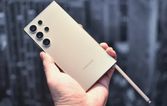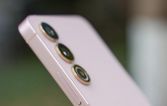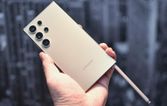
The Samsung Galaxy Watch 7 series isn’t likely to be the company’s most thrilling wearable this year. That honor will go to the Galaxy Ring. Perhaps that’s why rumors from various sources suggest that Samsung is looking to shake up its watch design. According to SamMobile, the company aims to revisit a squarish design reminiscent of the original Galaxy Gear.
This brings to mind the Samsung rumor mill back in mid-2022. At that time, there were whispers that the company would ditch the much-loved physical rotating bezel. Which, in my opinion, was a foolish, absurd, idiotic idea. It was distinctive. No other smartwatch manufacturer had the physical rotating bezel, making it Samsung’s unique hallmark. Brands covet popular designs — how could they willingly discard that? Yet, that rumor turned out to be true. The Galaxy Watch 5 series debuted with only the digital touch bezel.
Then, last year, Samsung backtracked and reintroduced the rotating bezel with the Galaxy Watch 6 series after enough customers demanded its return. You’d think Samsung would have learned something after the bezel shuffle didn’t go well. But now, changing the shape is the endeavor? Plus, we just established how beloved the physical bezel is. Can a rotating physical bezel even improve a square display? Are we really going through this again?
It’s true that Samsung started with a square display on the Galaxy Gear. However, starting with the Gear S2, Samsung went all-in on a round display — so much so that when I think of Samsung smartwatches, I immediately envision a circular watch with a rotating bezel. Over time, it’s helped Samsung’s devices stand out from the crowd. I must confess, as I recently upgraded my smartwatch collection, among a sea of Android watches, it’s always easy to choose Samsung’s.
Round displays also feel like a nostalgic nod to the past. It’s not that there aren’t rectangular analog watches. But if you were to imagine a wristwatch, I’m willing to bet most people picture a round face. That’s why so many people will almost always find round smartwatches more aesthetically pleasing. Heck, I still get the occasional disgruntled commenter who laments that they would buy an Apple Watch, if not for the rectangular display. Conversely, the Galaxy Watches are effortlessly elegant — especially now that they’re not as thick as they used to be.

I can’t deny it. There are benefits to a square display. It’s slightly easier for reading notifications, and it’s easier on app developers since the shape is more akin to a phone. Since Wear OS 3, many Android watches don’t work with iOS anymore — meaning Samsung doesn’t need to differentiate itself from the Apple Watch. It needs to differentiate itself from other Android watches, most of which are circular. On paper, these are valid reasons for wanting to make the switch.
However, wearable design isn’t always about what seems logical. When you wear something on your wrist, there’s a personal connection that’s hard to quantify. For years, the combination of a round face and a physical rotating bezel has been ingrained in the minds of Galaxy Watch fans. While I’m sure some people will embrace a square Galaxy Watch, I have a feeling there’d be an instinctual backlash as well.
Granted, SamMobile’s report was light on details, merely citing anonymous internal sources as saying the switch was “very likely.” It could also be that Samsung is considering this not for the Galaxy 7 but for future Galaxy Watches. If that’s the case, I hope the folks at Samsung are taking some real time to consider why they think they should do this. I’m just as guilty as the next commentator for complaining that every Galaxy Watch looks the same. But when you have an iconic design, any significant change must be a smart one. In this case, switching to a squarish display risks the Galaxy Watch losing a core piece of its identity.








By Andrej Kovacevic
Updated on 23rd April 2024